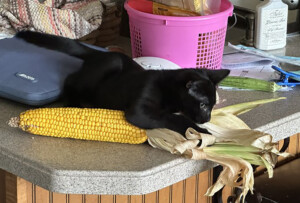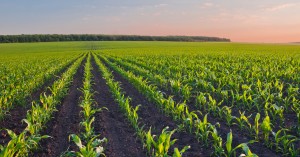Oilseeds are now a lightning rod. America’s top ag export, accounting for over $40 billion, is at the center of a heated debate on the state of America’s health. The appointment of RFK Jr. to head Health and Human Services will do nothing to ground the conversation. He’s been outspoken in his view of how seed oils are one of the unhealthiest ingredients that we have in foods. And he’s not alone. Rising GOP star Rep. Anna Luna recently called for a ban on seed oils, high-fructose corn syrup, and other “highly processed additives.” This has others questioning why the government should subsidize these crops.
There’s no denying that we are reaching a health crisis. Americans hold the dubious distinction of spending more on healthcare than any developed nation on earth. While we spend $1.7 trillion on food, we spend $1.9 trillion on healthcare. Much of those healthcare expenses are used to treat the effects of poor diet. Something needs to change. The role of oilseeds in the discussion, however, is up for debate. In a recent report by the American Heart Association, they cited a noted Stanford medical professor and nutritionist as saying, “they are not to be feared” and continued by explaining, “it’s hard to cast the blame on the seed oils when these foods contain so many other things.” Studies show that 40% of Americans qualify as obese, while only 3% of Japanese citizens are classified in that not-so-flattering category. But what’s the most widely used cooking oil in Japan? You guessed it, seed oils. Japan is also our second-largest soybean customer. So the debate will rage on and escalate into a wider discussion on healthy eating. This all figures to impact farm-related programs and legislation. While oilseeds may be under attack, former health villains such as butter, eggs and cheese are experiencing record demand due to better education, and perhaps a longing for the tasty and wholesome way grandma cooked. And who would have ever imagined that “beef tallow” would be trending?
Where’s the beef? It may need to be locked in Fort Knox. Last week live cattle traded at record highs. Cattlemen are getting around $2,400 for market steers. We’re looking at the tightest beef supplies in eight decades. Demand is growing too, as retail sales increased 9% last year. This is great news for producers, right? Well, kind of. If you have established herds, you’re sitting pretty. Not so much if you’re looking to expand, or if you’re a corn grower looking to add cattle. High interest rates don’t help with expansion either. Then there’s that ever-present invisible hand of capitalism. Much like in the popular TV Series Landman (my must-see obsession now that Yellowstone has concluded) where Billy Bob Thornton’s character explains, “you want oil to live above $60 but below $90.” The same goes for beef. Even though carnivore diets are the new rage, and a current driver of consumption, the fact remains that 12% of Americans – middle aged males – account for half of our beef consumption. The beef industry needs to attract more consumers. The new diets and the growing reset culture we’re seeing in the USA figures to help, provided the product is affordable.
Beef isn’t the only farm product receiving a recent jolt. Last week’s WASDE report slashed 2024 corn yields by nearly 4 bushels per acre, to 179. That shot prices to levels not seen in over a year. Central Illinois cash markets are now trading anywhere from $4.30-4.60. Prices are now $1 above where they were just five months ago. Soybeans also rallied after USDA adjusted yields by one bushel, to 50.7. Most inland cash markets range from $9.90s to $10.20s. While more gains are needed, this is certainly an encouraging sign.
Just over two years ago, I was scrolling through social media and read a post from a mutual connection: a young lady who chronicled her adventures working for a custom wheat cutting outfit. She used her wit and charm to personally connect with farmers and ag enthusiasts alike, telling the story of being a lowly grain cart operator and the trials and tribulations that come with it. Her name was Emma. She was on her way back west and was looking for interesting content to develop and post on her channels. I reached out to her and suggested she stop in Gilbert, Arizona, to visit an independently owned company that uses a unique, natural product technology to help farmers the world over. She took me up on the offer and produced this fun profile on what at the time was Bio Huma Netics (now Huma). Last week, @AgWithEmma was named “Top Ag Influencer” at the FarmCon Conference. This goes to show that good things really do happen for good people. Congratulations, Emma!
Related Posts

This Week in Ag #27
Just as the seasons inevitably turn, so does the farming landscape within a tight-knit rural community. That reality hit close to home for me last Thursday with the passing of my uncle, Gary Nichols. He and my father farmed together for decades, and like most farming families, Uncle Gary was a solid fixture in my life,

This Week in Ag #2
Are we looking at a fertilizer shortage? Guess it depends on your definition. The availability of fertilizer isn’t a major concern in the US. It really wasn’t last year, either. As a good friend (who I consider to be among the best farmers in the country) told me last winter, “you can get it, it’s

This Week in Ag #49
The image below is more than just a funny meme. It depicts how generations of farmers painted the canvas of their fields. The farm I grew up on consisted of a 160-acre field, complete with waterways, hills, wet holes, varying soil types, point rows, and in spots, contest-winning yield potential. We annually split the field

